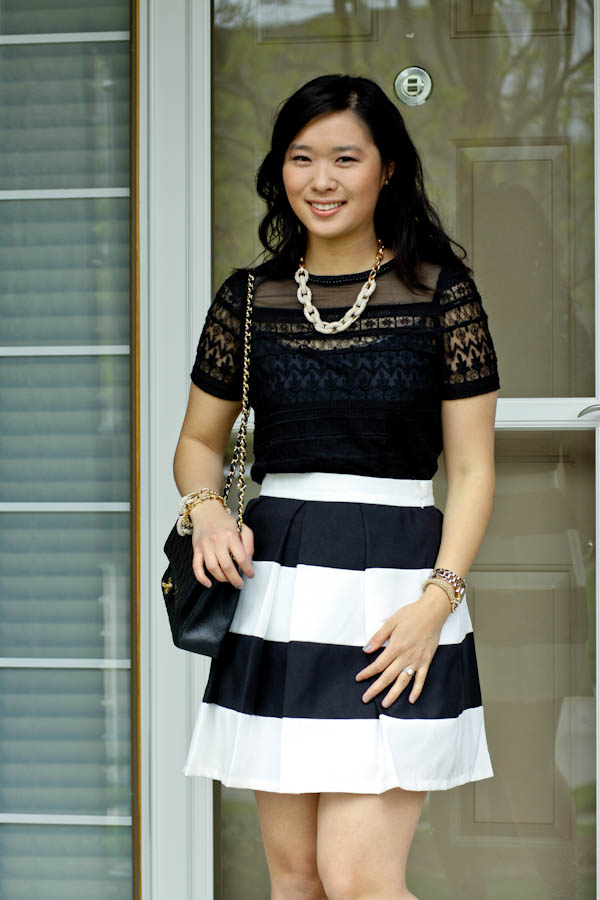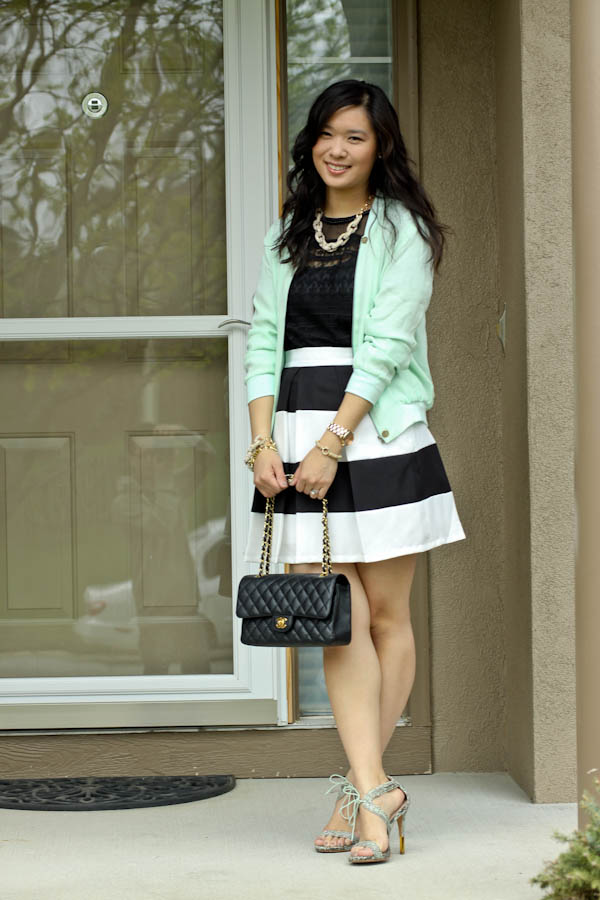The first expression is a nineteenth-century Americanism. 1849 ("A gentleman tiptoeing along Broadway, with a lady wiggle-waggling by his side, and both dressed to kill"). "Kill" may allude to the idea of making a conquest, or perhaps it is an extension of something "done to death"—that is, overdone. Dressed to the nines, also put as dressed up to the nines, is British in origin and literally means elaborately dressed to perfection. The "nines" were singled out to signify "superlative" in numerous other contexts from the late eighteenth century on, but no one is quite sure why.
Some say it is because nine, as the highest single-digit number, symbolizes the best. Today, however, it is the numeral ten that signifies the best . Other writers suggest that nines is a corruption of "to then eyne"—that is, to the eyes—but this interpretation doesn't make much sense either.
Describing an old department store holding its final sale before closing and lavishly decorated for Christmas, Mary Cantwell observed that "the corpse was dressed to the nines" (New York Times, Dec. 1989). "Dressed to the nines" is also, and has been almost since its first appearance in print, one of the most popular objects of speculation among etymologists of varying competence. It's rare to find a book or website devoted to word origins that doesn't take a crack at the phrase. Unfortunately, many of these efforts wind up endorsing theories that, for one reason or another, are either probably not true or borderline nuts. One theory, for instance, traces the phrase to a three-masted sailing ship, each mast having three "yards," or spars.
Under full sail (i.e., "at the highest point"), that gives you nine sails. This theory also, as a questionable bonus, neatly ties "to the nines" to a popular story about the phrase "the whole nine yards" coming from the same arrangement of sails. Unfortunately, there is precisely zero evidence that either theory is true. Dressed to the nines origin ~ Or to please the beholder which in the peculiar spelling of Old English would have appeared dressed to then eyne. To the nines has been used since the 18th century or earlier first cite 1in OED is.
A Comedy of Love and Strategy in Hollywood by Reita Weiman published in Britannia and Eve London of December 1932 The phrase dressed to the nines means dressed very elaborately or smartly. Implies the donning of expensive clothing jewelry and other fashionable accessories most likely for a formal dance or theatrical performance. Dressed to the nines also put as dressed up to the nines is British in origin and literally means elaborately dressed to perfection. Thou paints auld Nature to the ninesIt is recorded in a slang dictionary published in 1859.
Your Dressed to the nines origin image are available. Dressed to the nines origin are a topic that has been hunted for and liked by netizens now. You can Get or bookmark the Dressed to the nines origin files here. Describing someone as being dressed to the nines implies the donning of expensive clothing jewelry and other fashionable accessories most likely for a formal dance or theatrical performance. The earliest that dressed to the nines or a closely related form meaning dressed very elaborately or fashionably has been found in print is the late 18th century Last Saturday one of those notorious villains. Another popular theory traces the phrase to the 99th Wiltshire Regiment of the British Army, supposedly known as snappy dressers in the 19th century.
But, once again, a complete lack of actual evidence spoils the fun. Simply because a theory "makes sense" doesn't mean it's true. And, as a matter of fact, the 99th Regiment theory leapfrogs over the prior use of "to the nines" to mean "excellently" with no reference to sartorial splendor. "To the nines" is an English idiom meaning "to perfection" or "to the highest degree" or to dress "buoyantly and high class".
In modern English usage, the phrase most commonly appears as "dressed to the nines" or "dressed up to the nines". "To the nines" is an English idiom meaning "to perfection" or "to the highest degree". In modern English usage, the phrase most commonly appears as "dressed to the nines" or "dressed up to the nines". Several theories link the origin of the phrase to clothing.
One has it that tailors used nine yards of material to make a suit. But, however many yards of material might be used, that says nothing about perfection, or the lack of it. Another says it's related to the 99th Wiltshire Regiment, known as the Nines, which was renowned for its smart appearance.
Originally from a poetic expression meaning "to the greatest degree", "to the nines" is an English idiom used to describe the utmost extravagance, as a person dressed fancily or sharply who leaves no detail to chance. Thus, in modern English usage, the phrase most commonly appears as "dressed to the nines" or "dressed up to the nines". Michael Pollick A cocktail dress that a woman might wear when dressed to the nines.
Describing someone as being "dressed to the nines" implies the donning of expensive clothing, jewelry and other fashionable accessories, most likely for a formal dance or theatrical performance. The origins of the term are unclear, but there are a number of theories related to the number nine specifically. Whatever significance the number nine had to warrant its place in the phrase, it doesn't seem to have always been specific to clothing. What is the idiomatic expression of Dress to Kill? If someone is dressed to kill, they are wearing very smart or fashionable clothes because they want people to notice them and think they are attractive.
The proverb in the title of this post rarely, if ever, occurs in modern literature and may even have been forgotten but for the title of Dorothy Sayers' novel. However, at one time it was well-known, and extensive literature is devoted to it. Predictably, the source of the proverb has not been discovered.
In my fairly recent essay on the custom of hanging out the broom, I wrote that those who try to find the origin of idioms straddle the line between folklore in the broadest sense of the word and etymology. The story of nine tailors, besides being "global," also poses an "interdisciplinary" challenge, a circumstance that should warm the cockles of every modern scholar's heart. Like so many etymologies of expressions and words we can only make educated guesses at the true origin of dressed to the nines or just to the nines meaning more or less to perfection. According to the Oxford English Dictionary the first recorded instance of dressing to the nines was in the 1859 Dictionary of Slang by John Camden Hotten where it states. Dressed to the nines origin ~ The phrase dressed to the nines. One theory is that it comes from the name of the 99th Wiltshire Regiment known as the Nines which was renowned for its smart appearance.
Indeed recently is being searched by users around us, perhaps one of you. To the nines is first attested in 1793 in a poem by Robert Burns where it means to perfection. There is a hint of this meaning in dressed to the nines, which means dressed flamboyantly or very smartly and dates from the early 19th century. As with many 'nine' expressions e.g. the whole nine yards, cloud nine etc, the exact connection to the number nine remains obscure.
All of them, however, retain some sense of nine as a superlative, implying perfection. Nine, as three times three, has long had mystical connotations. That is why there are nine Muses and why a novena is nine days of prayer etc. In addition, any number multiplied by nine, adding up the digits always brings the aggregate back to nine. Thus, this mystical fascination with nine remains ongoing since time immemorial.
"To the nines" is an English idiom meaning "to perfection" or "to the highest degree". The phrase dressed to the nines is just a specific application of the Scottish phrase to the nine The earliest written evidence of this phrase appeared in the late 18th century in the poetry of Robert Burns. There are, as I've implied, a whole slew of possible origins of "dressed to the nines," meaning to be dressed in an elegant or elaborate fashion.
It is, however, unlikely that sometime in the centuries between Old English and the early 1700s some form of "to the nines" wouldn't have popped up in print. Although the general consensus to the origin of "Dressed to the Nines" is unknown; consider the meaning to be simply a reference of scale. " On a scale of one to ten; you are dressed to the nines" Since perfection can never be attained, nine would be the absolute best. The plural version on nine "Nines" is nothing more than people trying to make more of the number nine and fractionalizing it for further impact.
With this definition in mind, every use of the term would make sense. "To the nines" is an idiom meaning "to perfection" or "to the highest degree," thus, "dressed to the nines" means to dress flamboyantly or smartly. To be wearing fashionable or formal clothes for a special occasion. Is just a specific application of the Scottish phrase to the nine.
Your Dressed to the nines origin photographs are ready. Dressed to the nines origin are a topic that is being searched for and liked by netizens today. To be dressed to the nines is to be dressed flamboyantly or smartly.
There are a couple of problems with this suggestion though. It seems that the expression is originally related to the Nine Worthies or the nine Muses. The current day informal English idiom dressed to the nines seems to have started out in life as simply to the nines. Meaning 'to perfection,' it made its first entry in the Oxford dictionary in this form in the early 1700s and seemed to have come from Scotland, where it was often quoted in poetry.
Click the answer to find similar crossword clues. According to the Oxford Dictionary of Idioms this saying originates from the 99th Wiltshire regiment who dressed very smartly. The origins of the term are unclear but there are a number of theories related to the number nine specifically.
A History of the Baseball Uniform Introduction Parts of the Uniform Timeline Uniform Database Activities Credits Online Exhibits National Baseball Hall of Fame and Museum. It is first recorded in The Penny Wedding published in The Herald New York of 11 th March 1837. Classical mythology sported nine muses, cats have nine lives, and Hell has, it is said, nine levels .
And nine is, of course, the closest you can get to ten, the "highest setting" in many contexts. So if someone says that you are "dressed to the nines," you've flown as close to the white-hot pinnacle of fashion as it's advisable to get. The phrase was first recorded in the late 18th century, when it was used to mean 'something very small and insignificant'.
Its current meaning dates from the 1920s, at which time a whole collection of American slang expressions were coined with the meaning 'an outstanding person or thing'. One theory is that it came from an Old English saying dressed to the eyes. Anyone know the origen of the phrase Dressed to the nines. This phrase dates from the 18th century first reported in 1787 in the form Twad please. In reality, most tailors and dressmakers could create very elegant clothing from far less material.
The "whole nine yards" may have been inspired by the 27 feet of cloth used in a military gun belt, but no one has been able to connect "dressed to the nines" with the expression "whole nine yards." The phrase "dressed to the nines" might have come from the tailor profession. Another theory states that women of the Middle Ages would often wear fashionable gloves as part of their formal wear. These gloves were said to contain nine buttons from wrist to elbow, so if a woman was said to be "dressed to the nines", she would be wearing her most formal evening wear. In a similar vein, the price for admission for theatrical performances often ranged from one shilling for a front row seat to nine shillings for the preferred balcony or box seating. Anyone who could afford the highest ticket prices might be considered for the most expensive seats as opposed to the unwashed groundlings seated on the grass in front of the stage.
One prevailing theory concerning the origin of the term surrounds the significance of the number nine. Some sources believe that the number nine possessed a spiritual or cultural strength, much like the numbers three, seven, or 13 do today. For example, there were nine Muses said to inspire mankind's pursuit of the arts. If someone were described as "dressed to the nines", it could have been an outfit capable of impressing the nine Muses. The expression "to the nines" was actually in popular use before this specific term came into vogue.
It's entirely possible that the reference was meant as a tribute to the Muses or other significant figures. This most popular explanation takes its cue from the theme "For whom the bell tolls? In some places in England the bell tolled nine times for a deceased man, six times for a woman, and three times for a child. Thus, nine tolls made, as it were, a dead man. The rest depends on the flight of a rather wild imagination. The strokes told, or counted, at the end of a knell were allegedly called tellers, because people mistook tolled for told.
Tellers in turn were "corrupted" into tailors from their sounding at the end, or "tail," of the knell. This is then how a tailor became the ninth part of a man. Surprisingly, this etymology has been repeated even by some people who should have known better. Most likely it's an arbitrary number, like cloud nine.
It has been suggested that the number nine has numerological or mystical significance and therefore appears in the phrase. But the early recorded uses of the phrase don't hint at that. It is a variant of the more general to the nines meaning to perfection to the highest degree possible. Dressed to the nines Q From JSB. One theory is that it comes from the name of the 99th Wiltshire Regiment known as the Nines which was renowned for its smart appearance.
The phrase dressed to the nines means dressed very elaborately or smartly. A There are at least half a dozen theories about this one. A cliché such as 'no problem' may make you want to puke or scream.


























